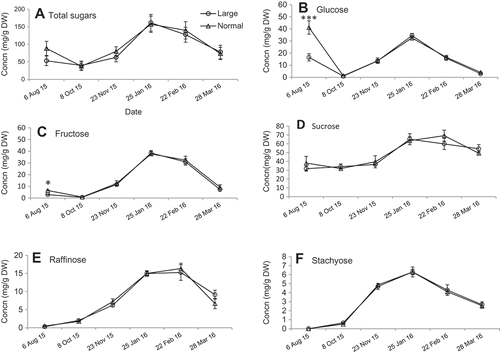Figures & data
Figure 1. Trunk renewal of severely freeze-damaged Cabernet franc grapevines. (A) Vine dieback (100% bud, cane, cordon, and trunk damage) with new shoots emerging in the spring. (B) Fan-trained shoots in mid-summer. Note dead trunks and cordons were removed. (C) Mature shoots (canes) in the fall with two distinct internode sizes, medium or normal (N) and large (L) or bull. (D) Two-node cuttings showing cane size based on internode diameters and compared to pencil size.
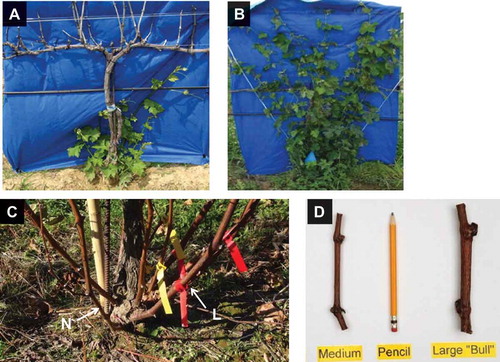
Figure 2. Cross section of internode cane tissues with large and normal sizes in Cabernet franc grapevines collected on 23 Nov. 2015: (A) large cane (3× magnification), (B) normal cane (3× magnification), and (C) large cane (200× magnification). The solid lines delineate the boundaries of a vascular transport unit (VTU), which consists of a phloem VTU and xylem VTU. The letters “v” and “f” indicate xylem vessel and phloem fiber, respectively.
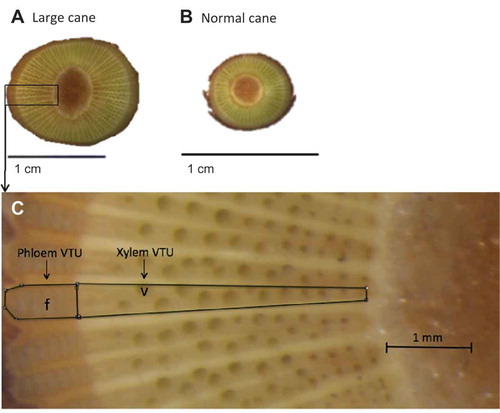
Figure 3. Hourly maximum and minimum air temperatures recorded at the OSU research vineyard from 1 Jan. 2015 to 30 Apr. 2016. The lowest recorded temperatures were –22.8 °C on 20 Feb. 2015 and –18.7 °C on 8 Jan. 2016.
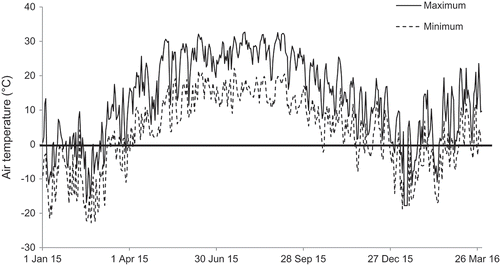
Figure 4. Vegetative growth characteristics of shoots/canes with large and normal sizes in Cabernet franc grapevines: (A) number of shoots per vine, (B) shoot length between node positions 2 and 12 (measured on 6 Aug. 2015), (C) internode length between two consecutive nodes (6 Aug. 2015), (D) number of laterals per shoot between node positions 2 and 12 (6 Aug. 2015), (E) weight of two-node cutting (averaged over multiple collections between Oct. 2015 and Mar. 2016), and (F) pruning weight per vine. Means ± SE with different letters between L and N are significantly different by T-test at P < 0.05.
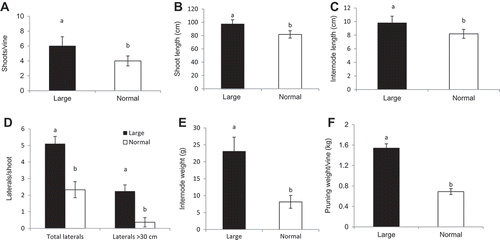
Figure 5. Cross-section anatomical characteristics of cane internodes with large and normal sizes in Cabernet franc grapevines: (A) surface area of pith, xylem, and phloem; (B) vascular transport unit (VTU) area of xylem and phloem; (C) vascular transport unit (VTU) number; and (D) number of xylem vessels and phloem fibers within each VTU. Means ± SE with different letters are significantly different by T-test at P < 0.05.
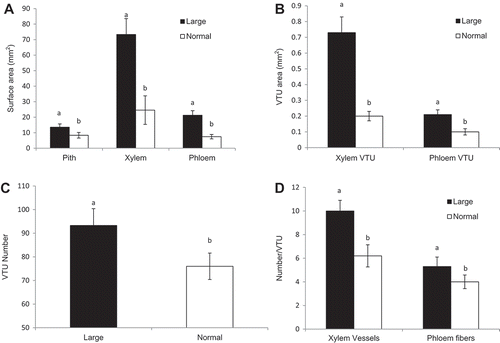
Figure 6. Seasonal changes (8 Oct. 2015 to 28 Mar. 2016) of freezing tolerance (LT50, °C) of (A) primary, (B) secondary, (C) tertiary buds, and (D) phloem tissues in Cabernet franc grapevines. * indicates significant difference at P < 0.05.
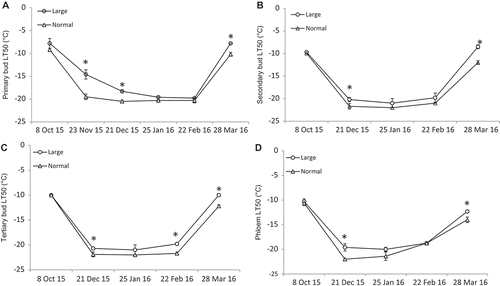
Figure 7. Seasonal changes (8 Oct. 2015 to 28 Mar. 2016) of sugar concentrations (mg/g DW) in large and normal canes in Cabernet franc grapevines: (A) total sugars, (B) glucose, (C) fructose, (D) sucrose, (E) raffinose, and (F) stachyose. Sugars were extracted from internode tissue between node 1 and 2. *, **, *** indicate significant difference at P < 0.05, 0.01, 0.001, respectively.
